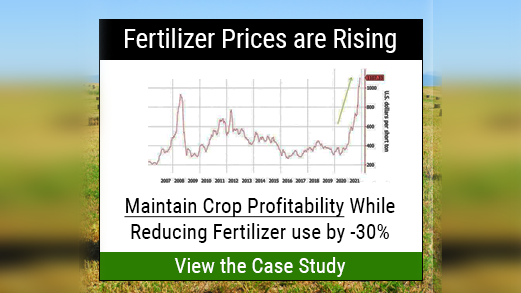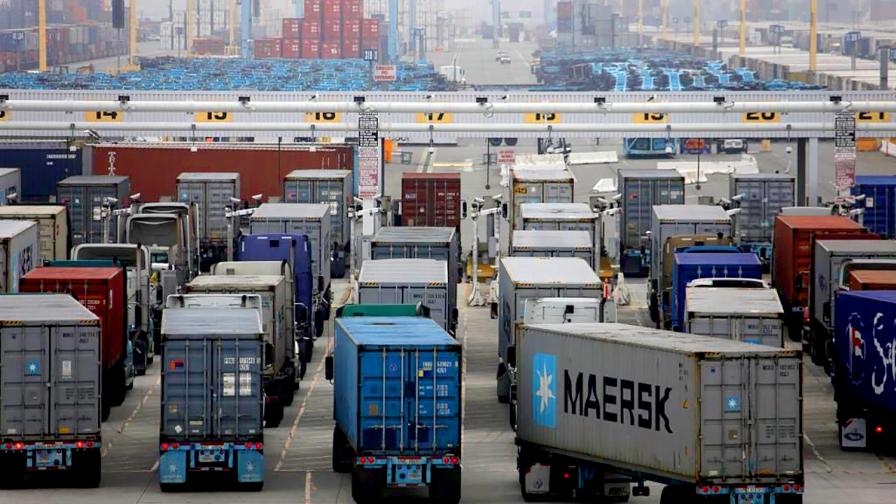What Fruit Growers Can Do To Start Off With Success in 2022
From every corner of the country, Extension specialists are resolved to make the New Year the best year for the growers they represent. It’s what they do. And if their advice here is any indication, they do it well.
In our leadoff spot, Bernardita Sallato, out of Washington State University, cuts to the heart of what it takes to excel in and out of the orchards and vineyards.
“For starters,” she says, “I will suspect successful growers celebrate the good returns of the season.”
Voilà! While nothing more need be said, there is no shortage of best practices that can steer growers toward those returns in the field, office and shop, at home, and on the road.
Desk Duties
“Successful growers keep careful records of production and expenses on a block-by-block basis. They know that growing fruit is a business that depends on meeting bottom lines. January is the perfect time to organize these records and evaluate how successful each block was in the previous season(s).” — Anna Wallis, Michigan State University
“The successful fruit grower reviews as many previous seasons’ records of inputs, tests, yields, quality, and net return.” — Louise Ferguson, University of California (UC), Davis
“Successful growers know it’s not simply about production records or the prices received. How their management decisions impacted the amount of revenue they got to keep is equally important. If they can repeat those decisions or identify ways to improve or reduce the risks of losing revenue, the more profitable their farm will be. They understand it’s not about yield per acre but profit per acre.” — Jon LaPorte, Michigan State
“Successful growers review this last year’s records, especially for production. They then plan their future plantings, activities, machinery needs, and management changes.” — Philip Schwallier, Michigan State (retired)
“Successful growers make sure all their records from the previous year are up to date. This includes spray records, yield and ripening data, notes on pests and diseases, etc.” — Miranda Purcell, Purdue University
“Successful growers update budgets regarding cost of production and projected returns. Notice I said ‘update,’ because successful fruit and nut growers should already be using budgets.” — Brittney Goodrich, UC Davis
“Review the business mission statement, goals, and objectives and have in writing.” — George Hamilton, University of New Hampshire (retired)
Current Affairs
“Specifically for 2021-2022, in the midst of a pandemic, many growers are concerned about availability of products for this coming season. We have heard that there may be shortages of particular products, such as insecticides, fungicides, and PGRS, and growers are making inventories of what they have, what they will need for the 2022 season and making calls to get lines on these products early.” — Nikki Rothwell, Michigan State
“Successful growers consider climate change threats to their farm and make long-term strategic decisions to manage risks. It is evident that climate change is already impacting fruit and nut crops, which makes adaptation practices crucial. If you have long-term investments in these important high-value crops, making strategic adaptation decisions can bring opportunities amid climate change risks.” — Tapan Pathak, UC Merced
“Coming into the new year, whether it’s in the field or in your market, keep an eye on your input costs as supply chains will still be in flux and cost of goods may remain high. Focus on what you can control so you can maintain your margins.” — Brian Moyer, Penn State University
“Pay attention to the weather, specifically keeping track of chill hours or chill portions to estimate if chilling requirements are being met. Keeping good track of chill accumulation is especially important in years when fall and winter is warmer than usual as it can help growers making management decisions (delay pruning of certain cultivars, not pruning short shoots, or spraying dormancy breaking chemicals) by the end of January.” — Juan Carlos Melgar, Clemson University
“In January successful growers conduct a critical analysis of field data and information collected along the previous crop growing season in order to identify trends, problems, and opportunities they faced. Based on the results of this critical analysis and evaluation, they develop a plan of action for the crop season ahead, with possible alternative scenarios related to weather conditions. I think preparedness and contingency plans are key for success in the farming business.” — Daniele Zaccaria, UC Davis
“Once a grower knows where their successes and failures were and why they occurred, the grower begins to design their crop protection program for the coming season. Good growers plan and cost-out their entire crop protection program for the coming season before the first bud swells.” — Thomas Ford, Penn State
“One thing that always amazes me with successful growers is their ability to see through the noise and obtain valuable information each winter. New problems arise each year whether we are talking on a national scale with new invasive pests or the cancellation of pesticides or even on a local farm scale with worker shortages, pesticide drift issues, or changes in pest pressure or tolerances. Growers are entrepreneurs that have to manage hugely diverse businesses and scrutinize every aspect of their farm to try to squeeze profit and ultimately a living.” — Aaron Cato, University of Arkansas
Neve too Far from the Field
“Successful growers review the topic of thinning. If you weren’t happy with your thinning this past year, maybe 2022 is the year to try using the carbohydrate model, even on a small scale. Or try precision pruning for crop load management by reducing the number of flower buds to a desired number.” — Mary Concklin, University of Connecticut
“Think about weeds. In portions of the country with mild climates, like where I am in California, January is a time when weed control operations may be occurring. However, even in colder climates, January is a good time to review your orchard weed control program and think about the coming season.” — Brad Hanson, UC Davis
“Plan a weed management program with herbicide resistance risk in mind. While we can’t plan ahead for every possible scenario and new invasions in the preseason, weeds differ from some insect and disease pests in that what was present in the field last year is a strong indicator of what you’ll likely see this year.” — Jed Colquhoun, University of Wisconsin-Madison
“Some growers neglect to optimize soil fertility and plant nutrition. Soil fertility and plant nutrition is not just about crop yield but also plant health. Optimizing plant nutrition is one of the most effective and sustainable ways to protect crops against plant disease.” — Joseph Heckman, Rutgers University
“In Southern California, with no rain, they irrigate, especially to control accumulated soil salts from the previous year’s irrigation waters.” — Ben Faber, UC Davis
“Deliberately assess the successes and failures of each orchard for the previous year and use the information to make changes the following year. That includes looking through leaf nutrient and salt analyses and making appropriate input adjustments, pest management practices, and related pest damage, and tree water stress and irrigation scheduling.” — Roger Duncan, UC Davis
“For nut crop growers, the most critical task during the winter (January) is conducting winter or mummy nut sanitation. Winter sanitation is considered the foundation of navel orangeworm management. With 2 million-plus acres of the host nut crops in the Central Valley, winter sanitation has become the most critical IPM tool to reduce the pest pressure in these nuts.” — Jhalendra Rijal, UC Davis
“Growers plan out their pest management programs, of course! They recognize that it is easier to adjust an existing program than it is to create one on the fly, when they are under pressure to make a rapid decision. As they say: Planning makes perfect!” — Michelle Moyer, Washington State University
 Shop Talk
Shop Talk
“As a plant pathologist, I would have to say that January is a great time for spray equipment maintenance. Checking nozzles, cleaning, and replacing as necessary can pay big dividends in the spring; clogged or worn nozzles can seriously impact the efficacy and efficiency of spray applications.” — Phillip Brannen, University of Georgia
“I remember about 20-plus years ago a retired Merchant Marine ship captain, then a new orchard owner, telling me how important preventive maintenance was in operating a cargo ship at sea and while docked in port and how he believed that mentality should be applied to all aspects of fruit growing, storage, packing, etc. So, the idea of ‘fixing stuff before it breaks’ is not new, and not mine, but it’s good advice. Keeping track of what’s due to be fixed is a key part of that process.” — James Bartsch, Cornell University (retired)
“Best practices for grower/shippers and packers/handlers during the offseason is to conduct a full disassembly of fruit sorting, grading, and packing equipment with systematic deep cleaning, appropriate sanitizer selection, and swab verification, especially where visual evidence of pathogen harborage sites is found.” — Trevor Suslow, UC Davis
 Road Trip!
Road Trip!
“The opportunity for extension and research workers to interact with growers is mutually beneficial. As an Extension specialist, I value the conversations with growers and feel that I probably learn more than anyone else as a result.” — David Lockwood, University of Tennessee
“While there are no silver bullets to making a farm successful, I often see the most successful growers taking advantage of all the meetings going on in January and February. Grower meetings are a great way to recharge with new ideas, learn about updated recommendations, and catch up with other growers before the season kicks off.” — Amanda McWhirt, University of Arkansas
“The most successful growers I know spend their winter months (December and January) learning all they can about how to improve their operations. This includes attending grower association and Extension-sponsored meetings in their own state as well as in other states.” — Brent Black, Utah State University
“Because of the ongoing COVID-19 pandemic, some of these events are held in-person while others are held virtually. Expos and conferences can vary in the ratio of work to play, so be sure to check out the agenda when deciding which one to put on your calendar.” — Anya Osatuke, Cornell University
“Good growers constantly learn new things by attending conferences and grower tours, reading trade magazines, watching educational videos, talking to other highly successful growers (and their state Extension specialists, hopefully.)” — Gary Gao, Ohio State University
“The most successful growers, in my opinion, do a ‘two-fer’ in January or February. They attend a high-caliber meeting focused on grower issues (usually these are offered by national organizations), and they extend this trip into a vacation and take a break from the farm. This change of pace stimulates the mind and refreshes the body.” — Marvin Pritts, Cornell University
Mental Health Makes Wealth
“One thing a successful fruit grower does is practice self-care. To some, this may seem counterintuitive – how would you be a successful fruit grower while working on something other than growing fruit? The truth is, and the data indicates, that practicing self-care and reducing stress significantly increases your ability to manage complex tasks like fruit growing.” — Remington Rice, Michigan State
“What good growers do, I think, is to keep focus and not be distracted by what David Kohl calls Killer Toys and other issues. Kohl works with agronomic crops, but ag econ principles are pretty similar. From Jackie Chan in the most recent Karate Kid movie, ‘Your focus needs more focus.’ Also, stick with the basics. I think new tech has some potential to distract growers from honing their fundamentals. Fundamentals first, then cool ‘labor saving’ tech afterward.” — Franz Niederholzer, UC
“The BEST apple growers are out in the orchard counting fruit buds and formulating their precision crop load management strategy for 2022! On the lighter side, they’re catching up on long-neglected household maintenance (painting), long naps, sorting through old clothes, etc. Two weeks somewhere warm and seaside — preferably with a Tiki Bar — does not hurt to recharge for the upcoming growing season! — Jon Clements, University of Massachusetts














